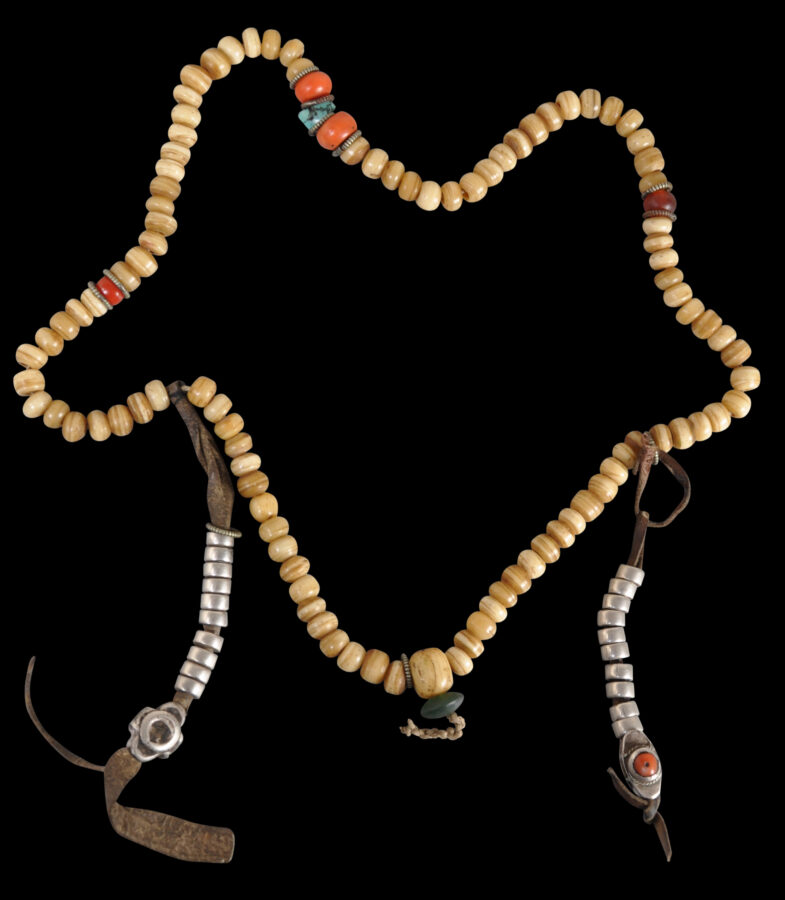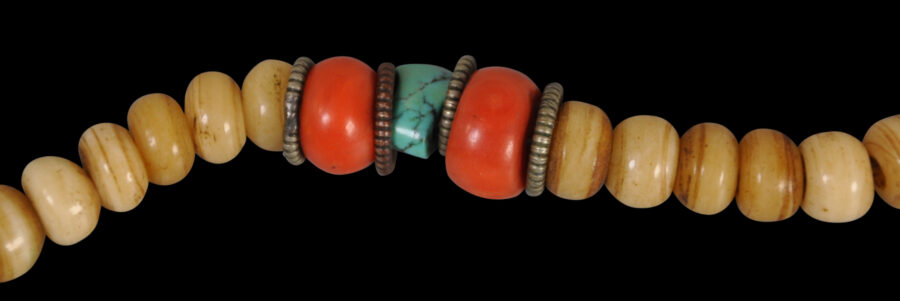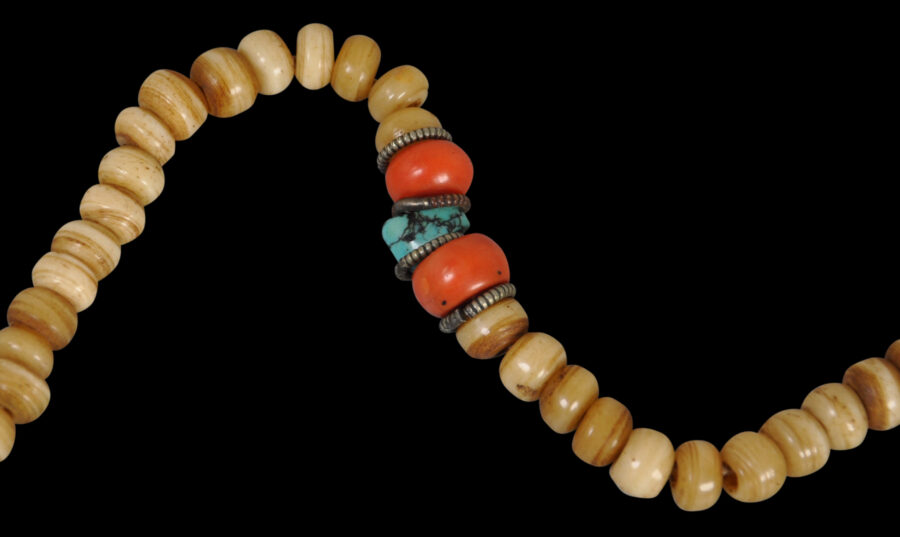This Buddhist rosary (sin-‘phen) is of fine quality. The patina from age and handling is incontrovertible.
The rosary comprises a superb, larger spherical bone bead; many flattened spherical cream coloured beads of bone (possibly human bone); one turquoise cabochon bead; two red coral beads, a red glass trade bead; several small, flat silver spacers; and two strands of silver counting beads on leather straps. These strands terminate with well-worn silver dorje-shaped finial beads one of which retains its original inset coral.
Buddhist rosaries evolved from ancient Hindu-Indian mala prayer beads. In Tibet, they were used by both laymen and monks. They are supposed to comprise 108 beads plus others as counters, although sectarian variants might have as many as 111 beads plus counters. The main prayer beads were used to count repetitions of prayers and the counters were used to record multiples of the main beads, so that thousands of repetitions could be counted.
The set here is in a very fine, stable and wearable condition. Each element is smooth from wear, and handling. The ivory and bone beads all have a beautiful, deep creamy patina.
References
Reynolds, V., Tibet: A Lost World: The Newark Museum Collection of Tibetan Art and Ethnology, The American Federation of Arts, 1978.
Sherr Dubin, L., The Worldwide History of Beads, Thames & Hudson, 2009.
Untracht, O., Traditional Jewelry of India, Thames & Hudson, 1997.








